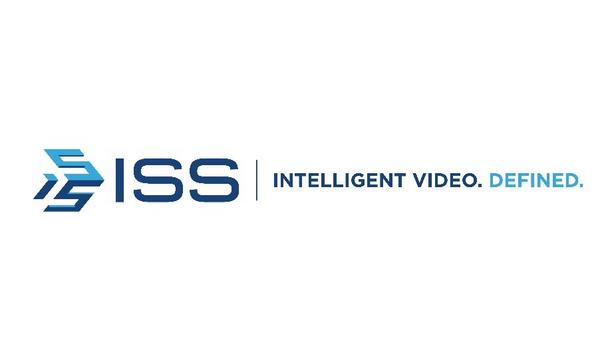Intelligent Security Systems Ltd. - Experts & Thought Leaders
White papers from Intelligent Security Systems Ltd.
3 ways AI can improve safety and reduce compliance costs
DownloadLatest Intelligent Security Systems Ltd. news & announcements
The Security Industry Association (SIA) has announced its new Board of Directors chair-elect and presented its new and returning members to the SIA Board of Directors on April 1 at The Advance, SIA’s annual membership meeting, and the following Board of Directors meeting during ISC West. The SIA Board of Directors ratified the selection of Mike Mathes, executive vice president (EVP), western operations at Convergint and former treasurer of the SIA Board of Directors, as SIA chair-elect. Three new voting members Additionally, the board ratified the selection of three new voting members of the Board of Directors to serve two-year terms from 2025 to 2027: Min Kyriannis, chief executive officer and co-founder, AMYNA Systems Bobby Louissaint, head of technical partnership engagement, Global Systems Services and Technology, Meta Don Young, EVP and chief operating officer, ADT. Six individuals in the second two-year term Six individuals were confirmed to serve a second two-year term: Charles Burns, director of commercial facilities, Intelligent Security Systems Tom Cook, EVP of sales and operations, North America, Hanwha Vision Tara Dunning, vice president of global security, Wesco Dave Ilardi, senior vice president and president of the Americas, Allegion John Nemerofsky, chief operating officer, SAGE Integration Steve Reinharz, founder and chief executive officer, RAD SIA Executive Committee for 2025 Following the ratification, the SIA Executive Committee for 2025 includes: Chair: Scott Dunn, senior director of business development, Axis Communications Chair-Elect: Mike Mathes, EVP of Western Operations, Convergint Secretary: Dave Ilardi, senior vice president and president of the Americas, Allegion Treasurer: John Nemerofsky, chief operating officer, SAGE Integration At-Large Officer: Tara Dunning, vice president of global security, Wesco Immediate Past Chair: James Rothstein, operating partner, Lee Equity Partners SIA’s Government Relations Committee “SIA is grateful to have the guidance of a highly regarded, committed and accomplished Board of Directors. On behalf of SIA and our members, we would like to congratulate our new SIA Chair-Elect, Mike Mathes, as well as the 2025 Executive Committee and our new and returning board members. These inspiring, experienced pioneers are helping to drive innovation at SIA and across the industry,” said SIA CEO Don Erickson. “We also thank outgoing board members Jonathan Aguila, whose vision helped lead to the creation of SPARC, SIA’s technical end-user community, and Holly Borgmann, who has played an instrumental leadership role as vice chair of SIA’s Government Relations Committee and as a member of the Endowment Committee – for dedicating their time and expertise over the course of their impactful service.” Spectrum of interests in the security industry The SIA Board of Directors is comprised of industry professionals representing a broad spectrum of interests in the security industry. At The Advance 2025, attendees also recognised the accomplishments and contributions of industry pioneers; presented its annual membership awards, the SIA Member of the Year Award, Sandy Jones Volunteer of the Year Award, Committee Chair of the Year Award and Standards Service Award; reviewed SIA official association business; exchanged market intelligence for the year ahead; and enjoyed a dynamic presentation from special guest speaker Sonny Tai, co-founder of Actuate.
ISS (Intelligent Security Systems), a pioneering provider of video intelligence and data awareness solutions, is excited to announce the appointment of Phil Jensen as its new Director of Sales for Under Vehicle Surveillance Systems (UVSS). Jensen brings a wealth of experience and expertise to ISS, particularly in government sales, technical security solutions, and growth-focused strategies. Prior to joining ISS, he held the position of Director of Government Business Development and Sales at Atmospheric Plasma Solutions, where he drove market expansion and fostered strategic partnerships in the government sector. Jensen leadership roles A 21-year U.S. Coast Guard veteran, Jensen is a proven pioneer with ample training in strategic operations Throughout his career, Jensen has held leadership roles at multiple organisations, including Advanced Detection Technology, SureID, Securewest International, and Lyon Workspace Products. A 21-year U.S. Coast Guard veteran, Jensen is a proven pioneer with extensive training in strategic operations. Alongside his military background, Phil holds a Master of Business Administration from Keller Graduate School of Management. His experience in delivering customer-focused solutions complements the ISS mission to revolutionise the market for AI-driven surveillance. Advanced security solutions "Joining ISS was an easy decision for me. The company’s commitment to innovation and delivering advanced security solutions will help us redefine the UVSS space across North America," said Jensen. "Phil’s expertise in key vertical markets, combined with his ability to foster customer success through innovative solutions, makes him an invaluable addition to the ISS team," said Matt Powell, Managing Director for North America at ISS. "His leadership will be instrumental in shaping the future of our Under Vehicle Surveillance Systems portfolio and driving our mission to provide cutting-edge security offerings." SecurOS® UVSS platform from ISS The UVSS provides critical insights to protect high-security venues, critical infrastructure The SecurOS® UVSS platform from ISS offers a compact, high-performance surveillance solution capable of scanning the undercarriage of vehicles to detect threats and other anomalies in as little as three seconds. Leveraging advanced analytics, including magnetic anomaly detection, 3D magnifying glass capabilities, and dewarping technology, the UVSS provides critical insights to protect high-security venues, critical infrastructure, and other sensitive locations. ISS’ dedicated mission A resident of Chesapeake, VA, and the father of two daughters, Jensen now joins ISS’ dedicated mission to provide impactful, AI-powered solutions for complex security challenges. His experience in establishing long-term government and industry partnerships will be critical in expanding the adoption of the award-winning UVSS technology throughout the security industry.
ISS (Intelligent Security Systems), a pioneering provider of video intelligence and data awareness solutions, announced that it has been selected to take part in the large-scale pilot phase of the Transit Tech Lab (TTL), a public-private partnership created by the Metropolitan Transportation Authority (MTA) and the Partnership Fund for New York City to accelerate innovation in public transportation. Last year, ISS, along with 17 other companies, were chosen as finalists from 150 global applicants to take part in an eight-week proof-of-concept (PoC) for TTL to demonstrate how the respective technologies enhance public transportation systems and services. Vehicle security checkpoint process ISS demonstrated how automated under-inspection capabilities could streamline the current vehicle security During the PoC, ISS collaborated with the Port Authority of New York and New Jersey to showcase the capabilities of the under-vehicle inspection solution, the SecurOS® UVSS (Under Vehicle Surveillance System). Leveraging the UVSS, ISS demonstrated how automated under-inspection capabilities could streamline the current vehicle security checkpoint process at the World Trade Centre. The UVSS was used to scan the undercarriages of over 2,000 vehicles for prohibited items and anomalies, while simultaneously collecting real-time data regarding vehicle flows, types, and checkpoint passage times. ISS groundbreaking solutions "As a company committed to innovation and excellence, we are honoured to expand our involvement with the Transit Tech Lab and showcase how ISS' groundbreaking solutions can improve transportation, security, and efficiency," said Aluisio Figueiredo, CEO of ISS. "This opportunity allows us to demonstrate the scalability of our technology and its ability to seamlessly integrate within critical transit systems to address emerging challenges." About the UVSS The UVSS is a compact and versatile under-vehicle surveillance system designed to detect explosives, illegal contraband, and various other anomalies. Capturing high-quality images in as little as three seconds, it supports vehicle speeds of up to 22 mph and integrates seamlessly with licence plate recognition (LPR) and access control systems to ensure security at critical facilities worldwide. Its applications extend beyond security, offering additional value in logistics, loss control, and service lane record-keeping environments. Key features include: Patented image dewarping technology for accurate visual analysis. Advanced integration with our industry-pioneering licence plate recognition (LPR) software (SecurOS® Auto) and third-party systems. Ease of deployment with no heavy construction requirements.
Insights & Opinions from thought leaders at Intelligent Security Systems Ltd.
In the field of access control, face recognition has come a long way. Once considered too slow to authenticate people's identities and credentials in high traffic conditions, face recognition technology has evolved to become one of the quickest, most effective access control identity authentication solutions across all industries. Advancements in artificial intelligence and advanced neural network (ANN) technology from industry leaders like Intel have improved the accuracy and efficiency of face recognition. However, another reason the technology is gaining traction is due to the swiftly rising demand for touchless access control solutions that can help mitigate the spread of disease in public spaces. Effective for high volumes Face recognition eliminates security risks and is also virtually impossible to counterfeit Modern face recognition technology meets all the criteria for becoming the go-to solution for frictionless access control. It provides an accurate, non-invasive means of authenticating people's identities in high-traffic areas, including multi-tenant office buildings, industrial sites, and factories where multiple shifts per day are common. Typical electronic access control systems rely on people providing physical credentials, such as proximity cards, key fobs, or Bluetooth-enabled mobile phones, all of which can be misplaced, lost, or stolen. Face recognition eliminates these security risks and is also virtually impossible to counterfeit. Affordable biometric option Although there are other biometric tools available, face recognition offers significant advantages. Some technologies use hand geometry or iris scans, for example, but these options are generally slower and more expensive. This makes face recognition a natural application for day-to-day access control activities, including chronicling time and attendance for large workforces at construction sites, warehouses, and agricultural and mining operations. In addition to verifying personal credentials, face recognition can also identify whether an individual is wearing a facial covering in compliance with government or corporate mandates regarding health safety protocols. Beyond securing physical locations, face recognition can also be used to manage access to computers, as well as specialised equipment and devices. Overcoming challenges with AI So how did face recognition become so reliable when the technology was once dogged by many challenges, including difficulties with camera angles, certain types of facial expressions, and diverse lighting conditions? Thanks to the emergence of so-called "convolutional" neural network-based algorithms, engineers have been able to overcome these roadblocks. SecurOS FaceX face recognition solution FaceX is powered by neural networks and machine learning which makes it capable of authenticating a wide range of faces One joint effort between New Jersey-based Intelligent Security Systems (ISS) and tech giant Intel has created the SecurOS FaceX face recognition solution. FaceX is powered by neural networks and machine learning which makes it capable of authenticating a wide range of faces and facial expressions, including those captured under changing light, at different resolution levels, and varying distances from the video camera. Secure video management system A common face recognition system deployment begins with IP video cameras that feed footage into a secure video management system connected to a video archive. When the software initially enrolls a person’s face, it creates a "digital descriptor" that is stored as a numeric code that will forever be associated with one identity. The system encrypts and stores these numeric codes in a SQL database. For the sake of convenience and cost savings, the video server CPU performs all neural network processes without requiring any special GPU cards. Unique digital identifiers The next step involves correlating faces captured in a video recording with their unique digital descriptors on file. The system can compare newly captured images against large databases of known individuals or faces captured from video streams. Face recognition technology can provide multi-factor authentication, searching watchlists for specific types of features, such as age, hair colour, gender, ethnicity, facial hair, glasses, headwear, and other identifying characteristics including bald spots. Robust encryption SED-compatible drives rely on dedicated chips that encrypt data with AES-128 or AES-256 To support privacy concerns, the entire system features an encrypted and secure login process that prevents unauthorized access to both the database and the archive. An additional layer of encryption is available through the use of Self-Encrypting Drives (SEDs) that hold video recordings and metadata. SED-compatible drives rely on dedicated chips that encrypt data with AES-128 or AES-256 (short for Advanced Encryption Standard). Anti-spoofing safeguards How do face recognition systems handle people who try to trick the system by wearing a costume mask or holding up a picture to hide their faces? FaceX from ISS, for example, includes anti-spoofing capabilities that essentially check for the "liveliness" of a given face. The algorithm can easily flag the flat, two-dimensional nature of a face mask, printed photo, or image on a mobile phone and issue a "spoof" alarm. Increased speed of entry Incorporating facial recognition into existing access control systems is straightforward and cost-effective Incorporating facial recognition into existing access control systems is straightforward and cost-effective. Systems can operate with off-the-shelf security cameras and computers. Users can also leverage existing infrastructure to maintain building aesthetics. A face recognition system can complete the process of detection and recognition in an instant, opening a door or turnstile in less than 500ms. Such efficiency can eliminate hours associated with security personnel checking and managing credentials manually. A vital tool Modern face recognition solutions are infinitely scalable to accommodate global enterprises. As a result, face recognition as a credential is increasingly being implemented for a wide range of applications that transcend traditional access control and physical security to include health safety and workforce management. All these capabilities make face recognition a natural, frictionless solution for managing access control, both in terms of performance and cost.
We are living in the age of Big Data, and businesses are inundated with large volumes of data every day. Success depends on capturing, analysing and ultimately transforming that data into information and intelligence that can be used to improve the business. So, it is with today's physical access control and video systems, too, which also generate unprecedented levels of data. But how can we make the data useful to end users and how can they realise its full value? We asked this week's Expert Panel Roundtable: Relating to physical security systems, what is the value of data and how can that value be measured?
One system, one card
DownloadAligning physical and cyber defence for total protection
DownloadUnderstanding AI-powered video analytics
DownloadEnhancing physical access control using a self-service model
DownloadHow to implement a physical security strategy with privacy in mind
Download







































